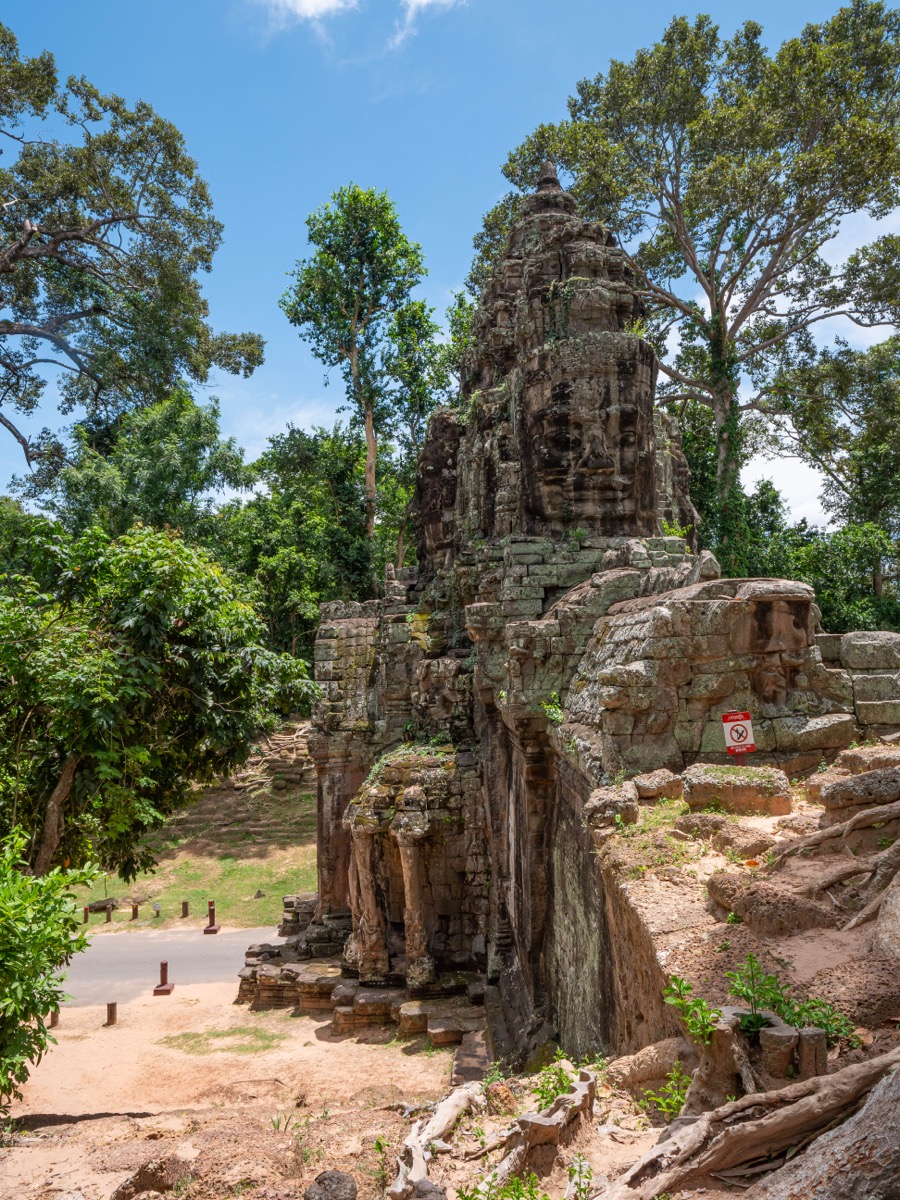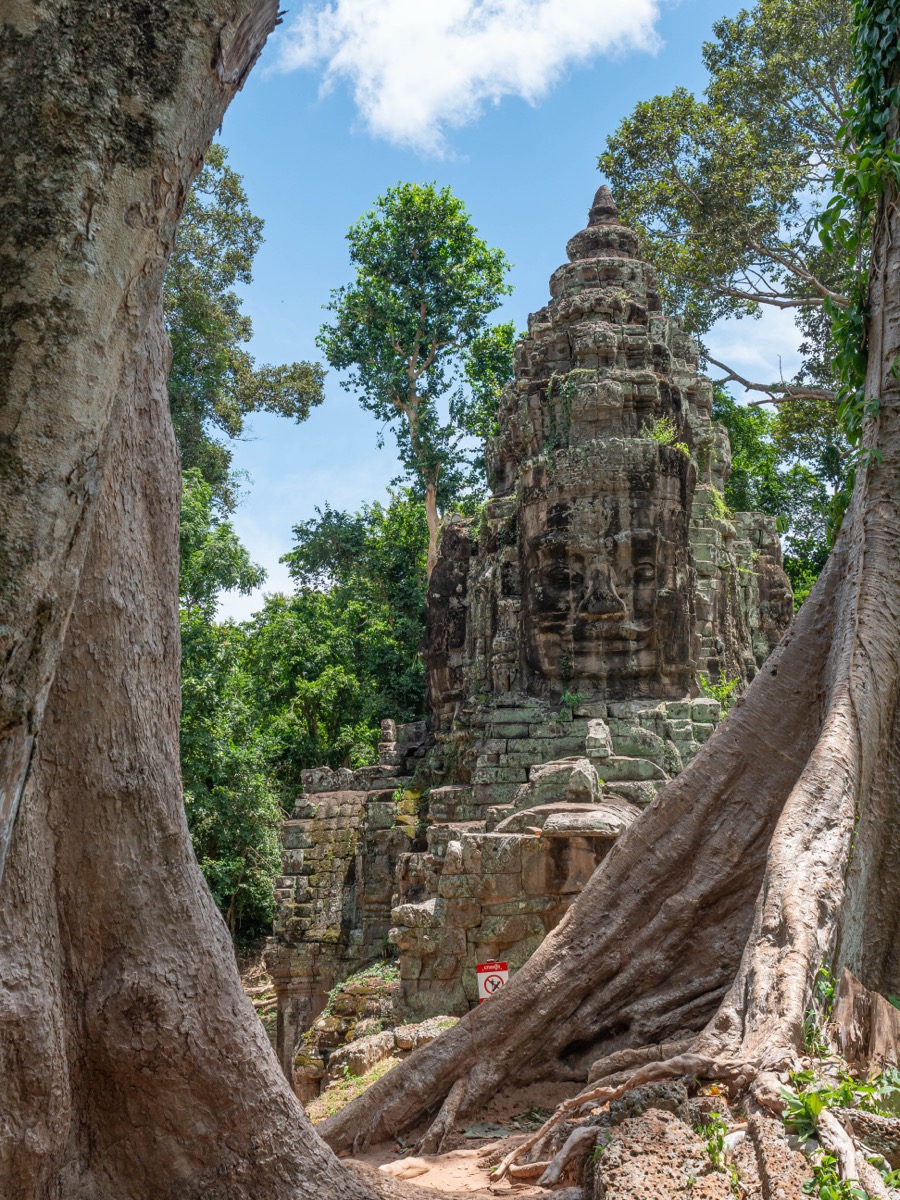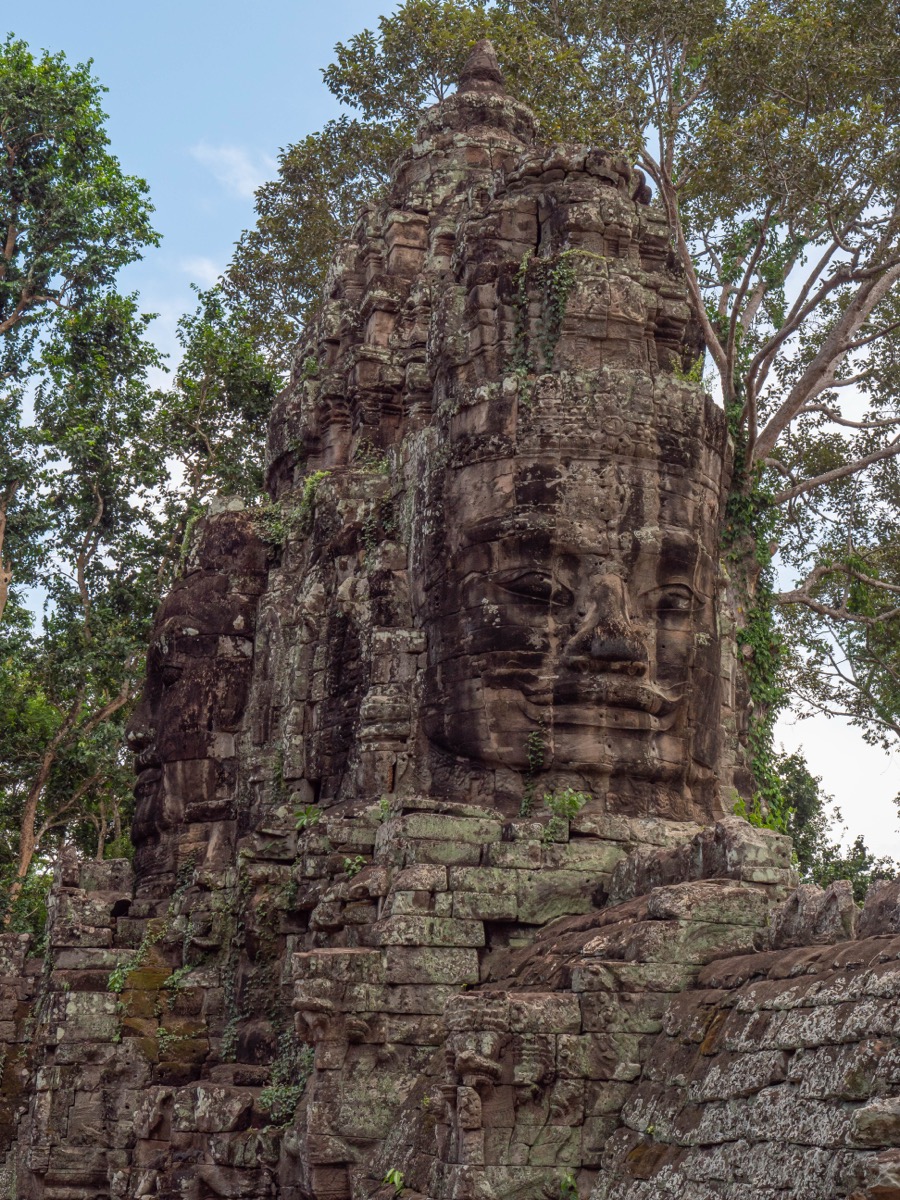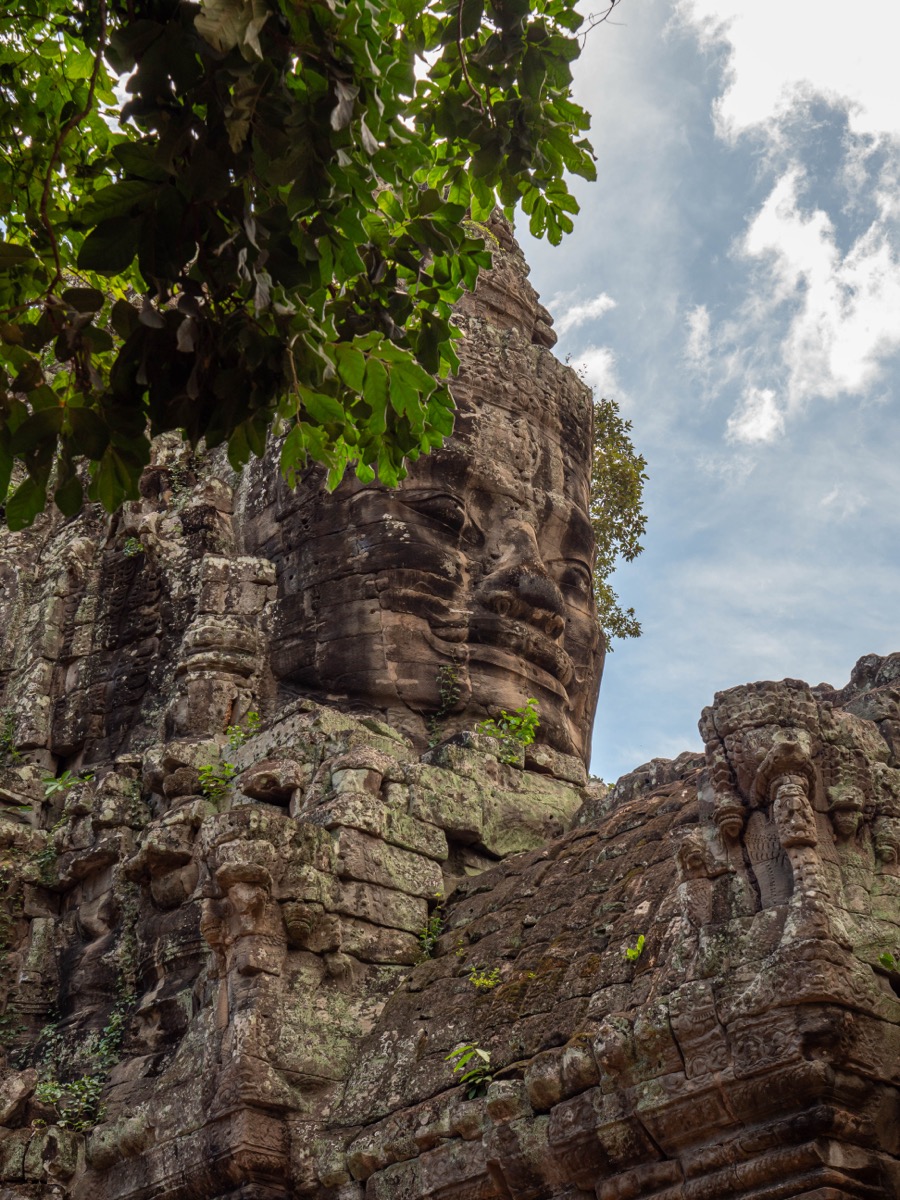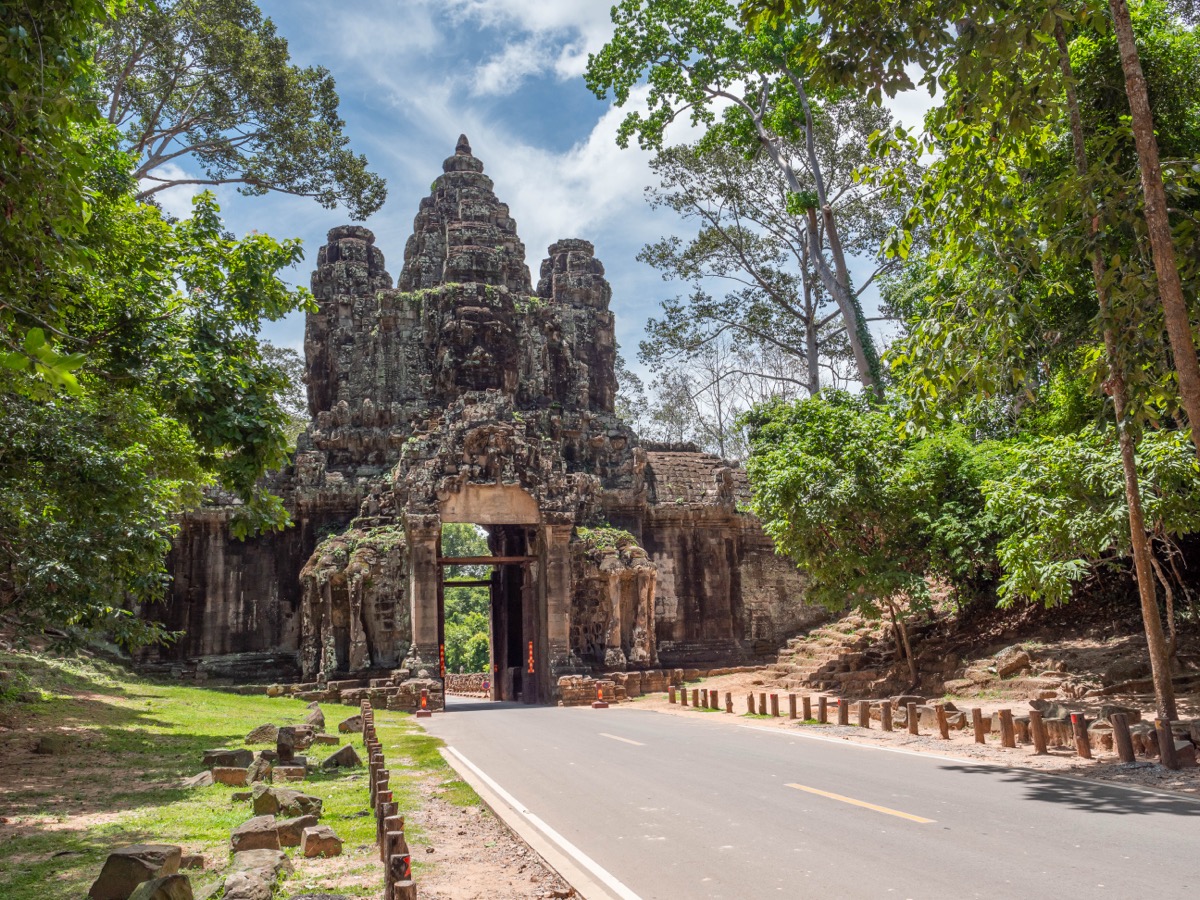Victory Gate
The Victory Gate of Angkor Thom is one of the five entrances leading into the ancient capital of the Khmer Empire, built in the 12th century under King Jayavarman VII.
Also known as Thvear Chey in Khmer or Victory Gate in English, it is located north of the East Gate (Gate of the Dead).
Notably, this gate is offset compared to the four others, which are aligned along the cardinal axes in a cross-shaped pattern. The center of Angkor Thom is represented by the Bayon temple.
The Victory Gate takes its name from King Jayavarman VII’s triumph over the Cham invaders, earning him the title of “Victor of the East” and solidifying the Khmer Empire’s strength.
Passing through this imposing gate, visitors enter Angkor Thom’s fortified enclosure, which houses other architectural treasures such as the famous Bayon temple, with its countless sculpted faces.
A Gate Dedicated to Triumphant Power
The Victory Gate, located on the eastern side of Angkor Thom, is one of the five main entrances to the Khmer imperial capital founded by Jayavarman VII (late 12th century). It allowed victorious troops, the king, and ceremonial processions to enter the city via the avenue connecting the Royal Palace to the Bayon.
This gate is both symbolic and strategic, reflecting the king’s military and spiritual power.
Architecture Similar to the South Gate
The Victory Gate follows the same architectural model as the other gates of Angkor Thom:
- A central tower 23 meters tall, topped with four monumental faces facing the cardinal directions — probably depictions of Lokeshvara, the bodhisattva of compassion, or the deified king.
- Three-headed elephants (Airavata), sculpted on the sides, ridden by divine guardians.
- A bridge leading to the gate, once flanked by statues of gods and demons pulling the naga, representing the cosmic myth of the Churning of the Ocean of Milk.
A Ceremonial Function
Unlike the East Gate (used for everyday passage), the Victory Gate was reserved for official occasions:
- The king’s triumphal entry after military victories.
- Religious processions or ceremonies related to the cult of the king.
- Direct access to the Royal Palace, located nearby.
It formed a ritual axis, reinforcing the idea of the king as both earthly ruler and divine figure.
A Symbol of Legitimate Power
In Khmer ideology, the king embodied cosmic power. The Victory Gate was not just an opening in a wall but a sacred threshold, marking the transition between:
- The profane outside world (the forest, the empire)
- The sacred interior (the royal city, the heart of the kingdom)
Passing through it meant acknowledging the king’s legitimacy and entering the established order.
Visiting Today
Less visited than the South Gate, the Victory Gate is appreciated by those seeking peace and unique perspectives on:
- The walls of Angkor Thom,
- Restored or partially preserved statues,
- The tall trees slowly reclaiming the sandstone blocks.
It can be accessed on foot, by bicycle, or by tuk-tuk from within Angkor Thom.
Conclusion
The Victory Gate illustrates the ceremonial grandeur of the Khmer Empire at its peak. More than a crossing point, it is an Angkorian triumphal arch, celebrating both the king’s power and the cosmic order he was meant to embody. Silent today, it was once crossed by victorious armies and solemn processions of a brilliant civilization.
